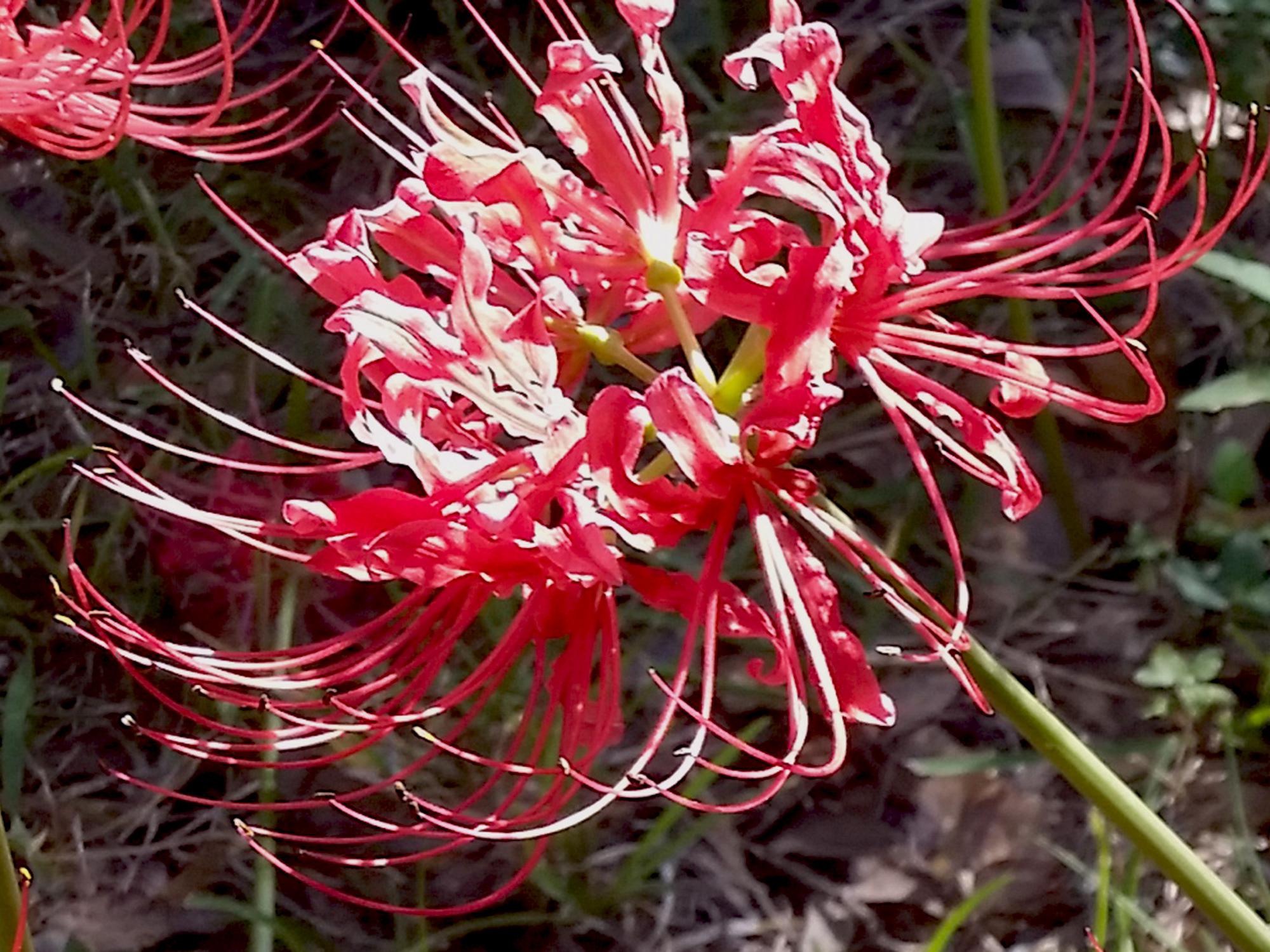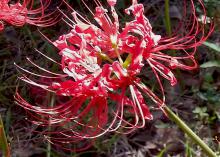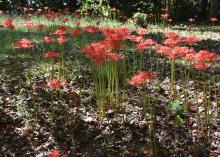Information Possibly Outdated
The information presented on this page was originally released on September 11, 2017. It may not be outdated, but please search our site for more current information. If you plan to quote or reference this information in a publication, please check with the Extension specialist or author before proceeding.
Fall brings nekkid ladies to Southern landscapes
This is the time of year many gardeners have been waiting for all summer.
If you’re thinking about the cool front that blew through this past weekend, I’m afraid you’re incorrect. What I’m talking about is the emergence of naked ladies in gardens all across Mississippi.
I’m talking about the seemingly magical plants known botanically as Lycoris. Common names include magic, surprise or resurrection lily, but some gardeners simply call them nekkid ladies.
The names derive from the plant’s odd-seeming growth. In the late summer and through the fall, all varieties of Lycoris produce tall flower stalks without any foliage -- hence the naked or magic references. After the flowers have faded, strap-like foliage appears to replenish the bulb’s energy supplies. The foliage fades away by late spring.
Another common name is spider lily, as the individual flowers are exotic and spidery looking.
There are several species of Lycoris, all with different colors. I grew a pink variety when I lived in the cold climate of Illinois. The most common species we see in Mississippi is Lycoris radiate, a popular Southern heirloom. It’s common to see these growing in large clumps in the middle of nowhere with no homes in sight, but marking an old homesite.
Driving along Highway 90 on the coast, it’s easy to see where homes once stood before hurricane Katrina came through.
In the fall, the flower stalks seem to come out of nowhere and are topped with a bright-red, azalea-like flower. There are even yellow-flowered varieties scattered about. One great attribute is that these plants are deer resistant.
If you have a friend with a large clump, you could collect some for your garden. Bulbs also are available online. They’re a bit pricier than daffodils but well worth it.
Plant in a sunny landscape bed that is well drained and gets sun for about half the day. A drill and a bulb auger will make quick work of digging the holes. If you don’t have one of these, get one; bulb planting has never been easier.
Place the bulbs rounded side down with the neck just above the soil line. Water them well and then sit back and enjoy being surprised by nekkid ladies in your garden for years to come.
Naked Ladies is one of the common plant names that is endearing to gardeners and nongardeners alike. There are many other garden and landscape plants with common names that make you wonder how they got that name.
My friend and well-known horticulturist Dr. Allan Armitage recently wrote a book examining the unique, funny and odd names of garden plants. His booked titled “Of Naked Ladies and Forget-Me-Nots: The Stories Behind the Common Names of Some of Our Favorite Plants” is an interesting read. The holidays are right around the corner, and this would be a great gift idea for that favorite gardener of yours.
We produced a Southern Gardening TV segment that took a fun look at these nekkid ladies. View it at http://extension.msstate.edu/southern-gardening/video/2016/naked-ladies.





